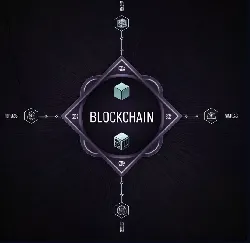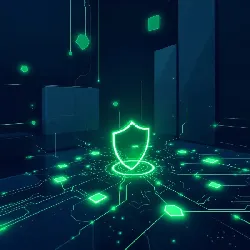Cybersecurity Explained: Why It Matters and How to Stay Safe in 2025

Introduction: The Digital World Needs Digital Defenses
In today's always-online world, cybersecurity isn’t just a tech buzzword—it’s something we all depend on. Whether you're streaming from your smartphone, running a small business from your laptop, or managing sensitive customer data in the cloud, digital threats are very real. From phishing scams to full-blown ransomware attacks, the digital landscape is full of risks that demand proactive protection.
Interestingly, while technology keeps advancing, so do the tactics of cybercriminals. That’s why cybersecurity has moved from a “nice-to-have” to a non-negotiable requirement—especially as our personal and professional lives become increasingly interconnected.
What Is Cybersecurity?
Cybersecurity refers to the collection of tools, strategies, and practices that protect digital systems—think networks, devices, applications, and data—from malicious attacks or unauthorized access. These attacks can aim to steal sensitive data, disrupt services, or even hijack entire infrastructures.
What makes cybersecurity particularly challenging today is the sheer scale of our digital footprint. With more devices than people—and most of those connected to the internet 24/7—opportunities for hackers are everywhere. The goal of cybersecurity, then, is to keep those doors closed and ensure your digital assets remain safe.
Why Cybersecurity Is Important for Everyone
Whether you're an individual scrolling through social media or a global enterprise managing millions of transactions, cybersecurity affects you. The risks range from the irritating (like spam emails) to the catastrophic (like having your company shut down after a ransomware attack).
According to IBM’s 2024 report, the average cost of a data breach hit $4.88 million—a number that continues to climb as cyberattacks grow more complex. Meanwhile, Cisco has pointed out that small and mid-sized businesses are now frequent targets, not just tech giants.
And it’s not just about money. Data loss, reputational damage, legal issues—these are just a few of the long-term effects organizations face after an attack. For individuals, a hacked email could snowball into identity theft or financial fraud.
Key Pillars of a Strong Cybersecurity Strategy
A solid cybersecurity program typically rests on three main components: people, processes, and technology. Each plays a critical role—and missing even one of them can leave your system exposed.
1. People: The First Line of Defense
Let’s face it—humans make mistakes. That’s why ongoing cybersecurity awareness training is essential. Something as simple as clicking a suspicious link or reusing a weak password can open the floodgates for attackers. Educating your team (or yourself) is a low-cost, high-impact way to reduce risk.
2. Processes: Structured and Predictable Response
Every organization needs a roadmap for how to handle cyber threats. Frameworks like the NIST Cybersecurity Framework provide step-by-step guidance to identify, protect, detect, respond, and recover. Having these processes in place means you’re not scrambling when something goes wrong.
3. Technology: Tools That Work 24/7
Of course, you can’t rely on human vigilance alone. Modern cybersecurity involves a suite of tools, such as:
-
Firewalls and antivirus software
-
Endpoint Detection and Response (EDR) systems
-
Multi-factor authentication (MFA)
-
AI-powered monitoring tools
-
Cloud and network security platforms
These technologies help fill in the gaps where human error or process limitations fall short.
Common Types of Cyber Threats to Watch For
Cyber threats come in many forms. Some are obvious, while others are surprisingly stealthy. Here are some of the most common you should know:
Malware
Malware includes viruses, spyware, and other malicious code designed to damage or control a system. Once inside, it can steal data, monitor activity, or disable devices altogether.
Ransomware
This is when attackers lock you out of your data and demand payment (usually in cryptocurrency) to give it back. Paying the ransom doesn’t always work—some victims never regain access, even after complying.
Phishing
Phishing emails look legitimate but are designed to trick you into giving up personal information. They often impersonate banks, delivery services, or even your workplace.
Tip: Always hover over a link in an email before clicking. If it looks suspicious, it probably is.
Social Engineering
This goes beyond fake emails. It includes psychological manipulation—like a fake call from “IT support” asking for your password.
Credential Theft
Stolen passwords are a goldmine for hackers. If you're using the same password across sites (especially without MFA), you’re making their job easier.
AI-Based Attacks
As AI tools become smarter, so do attackers. Generative AI is now being used to create highly convincing phishing messages, deepfake videos, and even malicious code.
Cryptojacking
In this case, hackers hijack your device to secretly mine cryptocurrency—draining your resources without you even knowing.
DDoS (Distributed Denial of Service)
A DDoS attack floods your system with traffic, crashing your site or service. It’s often used to distract from a larger breach happening in the background.
Major Domains of Cybersecurity
A well-rounded cybersecurity strategy addresses multiple domains, each with its own unique challenges:
-
Network Security: Protects internal networks and data flow.
-
Cloud Security: Secures applications and data stored in cloud environments.
-
Application Security: Focuses on building secure apps from the ground up.
-
Endpoint & Mobile Security: Safeguards phones, laptops, and IoT devices.
-
AI Security: Prevents misuse of AI systems and protects models from manipulation.
-
Identity & Access Management (IAM): Manages who can access what, when, and how.
-
Zero Trust Security: A “trust nothing, verify everything” approach that’s gaining momentum in modern organizations.
Cybersecurity Best Practices You Can Start Today
Even if you're not a cybersecurity expert, you can still take steps to protect yourself or your organization:
-
✅ Update software regularly to patch known vulnerabilities
-
✅ Use strong, unique passwords (and a password manager)
-
✅ Enable multi-factor authentication (MFA)
-
✅ Back up important data on secure platforms
-
✅ Train employees or family members about cyber hygiene
-
✅ Monitor activity in real-time using security tools
-
✅ Develop an incident response plan (even if it's basic)
These aren't just IT tasks—they're everyday habits that make a big difference.
The Cybersecurity Skills Gap: A Real Concern
One issue that both Cisco and IBM highlight is the global shortage of cybersecurity professionals. In fact, estimates suggest the gap could grow to 85 million unfilled jobs by 2030. That’s massive.
In the meantime, companies are turning to automation and AI-driven tools to bridge the gap—freeing up human analysts to focus on more complex and strategic threats.
Final Thoughts: Cybersecurity Is Everyone’s Responsibility
Cybersecurity isn’t just an IT department concern—it’s a shared responsibility. As threats become smarter and more frequent, the best defense is a layered approach: one that combines educated people, structured processes, and powerful technology.
Whether you're managing a business, building an app, or just trying to keep your data safe, cybersecurity should be at the core of your digital life. The good news? You don’t have to do everything at once. Start small. Build good habits. And stay informed.







